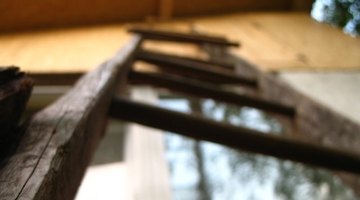What Will Moth Balls Kill in Your Attic?
Mothballs placed in an attic repel silverfish, moths and a variety of small rodents such as bats, mice, squirrels and even raccoons. Mothballs do not kill bugs or mammals. Their strong, unpleasant odor simply drives pests away.
Function

Mothballs repel insects that eat paper and cloth. In large concentrations, mothballs also repel small rodents and bats. Mothballs are made out of naphthalene and para-dichlorobenzene, two pesticides that have a very strong odor. Certain bugs and mammals dislike the smell of mothballs and stay away from them.
Effects
Mothballs don't actually kill bugs or mammals, but they are highly toxic. Humans can become ill from breathing mothball fumes, and can also develop skin irritation or burns if they touch or handle mothballs. Pets can be harmed by coming in contact with mothballs.
Warning
Mothballs must be used in large amounts in order to create a smell strong enough to drive off rodents. The odor generated by large numbers of mothballs placed in an attic can also harm human inhabitants and pets, making mothballs a poor choice for controlling small mammal infestations.
Considerations
Mothballs are most effectively used in small amounts to repel insects that damage fabric and paper. They work best in small, enclosed storage areas away from human beings and pets. Mothballs should never be used where children can reach them or smell them.
Expert Insight
Small mammal infestations in an attic or crawlspace can be eliminated by sealing up the cracks and openings the animals use to enter. Sprinkling mothballs in an attic can irritate humans. If sealing off an infested attic space is not effective in deterring rodents, a professional exterminator should be consulted.
References
Writer Bio
Pamela Grundy writes about psychology, finance, gardening, ecology and the paranormal. Grundy is a Grand Rapids New Age reporter for Examiner.com, and a regular contributor to "Eye On Life Magazine." Her poetry, short stories, and personal essays have been published in "The Sun," "Square Lake," "No Exit," "Maize," and more.
Photo Credits
- climbing to the attic image by Marius Lazin from Fotolia.com
More Articles



